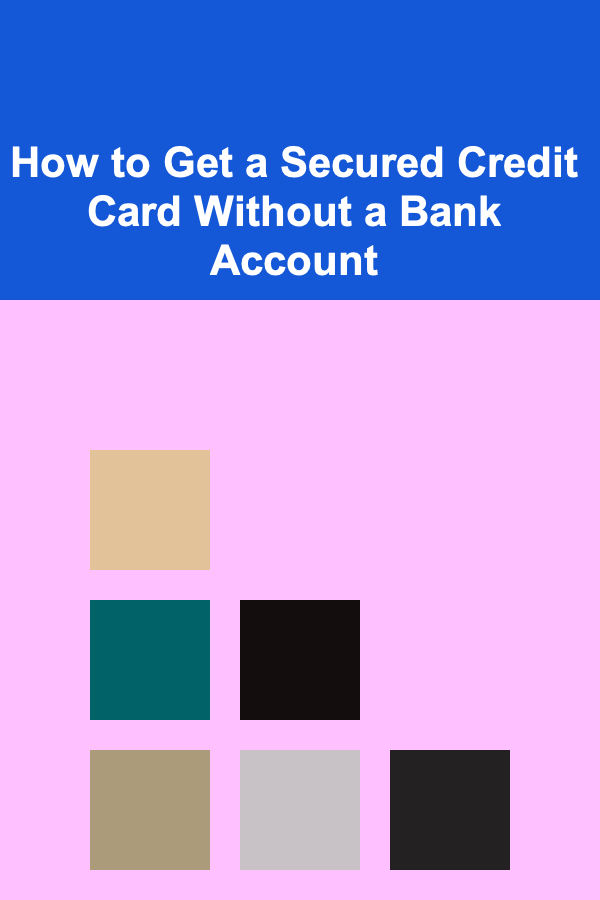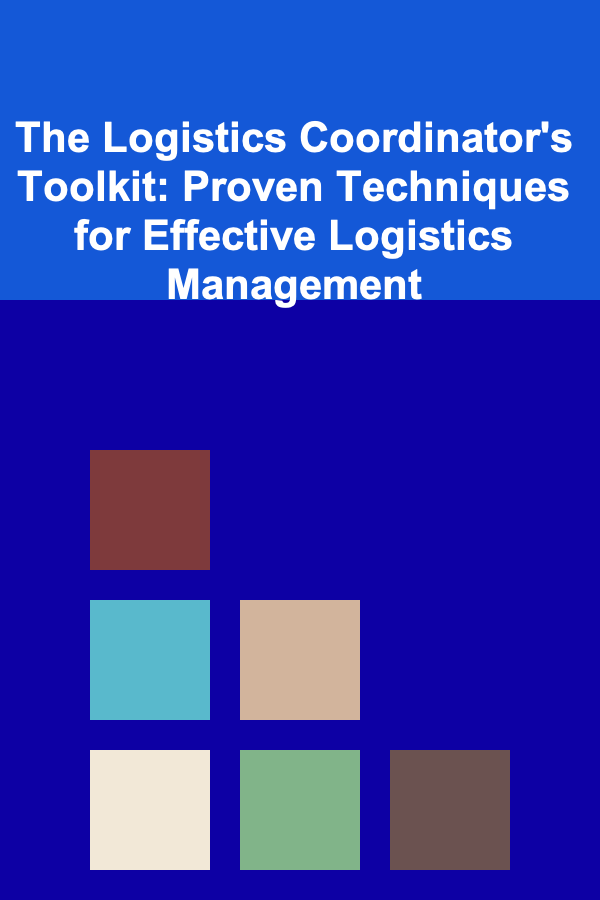
How to Get a Secured Credit Card Without a Bank Account
ebook include PDF & Audio bundle (Micro Guide)
$12.99$11.99
Limited Time Offer! Order within the next:

Secured credit cards are a great way for individuals with no or poor credit history to build or rebuild their credit scores. Typically, obtaining a secured credit card requires a bank account where the applicant can make a security deposit, which then becomes the credit limit. However, it's still possible to acquire a secured credit card without having a traditional bank account.
This article will explore what secured credit cards are, why they are useful for building credit, and how you can get one without needing a bank account. We will also cover different options for those who do not have a bank account, the steps to apply for a secured credit card without one, and things to keep in mind when using such a card to ensure it benefits your financial future.
What Is a Secured Credit Card?
A secured credit card is a type of credit card that requires a security deposit, which serves as collateral for the card issuer. The deposit typically becomes your credit limit, meaning if you deposit $500, your credit limit will be $500. Unlike traditional credit cards, which rely on your credit history to determine your spending limit, secured credit cards are a low-risk option for lenders since they have a financial cushion in the form of the deposit.
These cards are often used by individuals with no credit or a damaged credit history because they offer a straightforward path to rebuilding or establishing a credit score. When you use a secured credit card responsibly (e.g., making timely payments and keeping your credit utilization low), you can gradually improve your credit score, which may eventually enable you to qualify for unsecured credit cards in the future.
Why Are Secured Credit Cards Important?
For individuals with poor credit or no credit history, obtaining a credit card can be challenging. Traditional credit cards, which do not require a deposit, rely heavily on the applicant's credit history and financial stability. For people who have not yet established a credit history or have made previous mistakes in managing their credit, the options for obtaining an unsecured credit card are often limited.
Secured credit cards fill this gap. They provide a way to build or rebuild credit history without the strict requirements of unsecured credit cards. Additionally, they allow users to prove their creditworthiness by demonstrating responsible usage. After a period of responsible use, many secured credit card holders can transition to unsecured cards with higher limits and more benefits.
Why Would You Want a Secured Credit Card Without a Bank Account?
For many people, having a bank account is a requirement for applying for a secured credit card because the security deposit is usually paid directly from a bank account. However, not everyone has access to a traditional bank account. This may be due to various reasons such as:
- Financial Exclusion: Some people may not have access to traditional banking services, either due to geographic location, personal preference, or financial instability.
- Bad Banking History: Individuals who have been through bankruptcy or who have had past issues with banking institutions may be unable to open or maintain a bank account.
- Preference for Cash Transactions: Some people prefer to use cash or prepaid cards and avoid traditional banking systems altogether for personal or cultural reasons.
While having a bank account can make applying for a secured credit card easier, it's still possible to find options that cater to those who don't have one. In these cases, securing a card without a bank account may require extra effort, but the financial flexibility it provides is often worth it.
How to Get a Secured Credit Card Without a Bank Account
While having a bank account simplifies the process, there are still several ways to acquire a secured credit card without one. Let's look at the steps involved and the options available for individuals in this situation.
1. Look for Credit Card Issuers That Don't Require a Bank Account
The first step in acquiring a secured credit card without a bank account is to identify card issuers that do not require a traditional checking or savings account. Several financial institutions, including some credit unions and non-traditional lenders, offer secured credit cards with more flexible application requirements. Some of these institutions allow applicants to pay their security deposit using a money order or a prepaid card.
Here are a few options to explore:
- Retail Stores or Online Lenders: Some retail stores and online lenders offer secured credit cards that do not require a bank account. These cards may allow for payment through alternative methods, such as using a prepaid debit card or cash deposits.
- Prepaid Credit Cards: Although not technically secured credit cards, prepaid cards offer similar benefits for people who do not have a bank account. Prepaid cards work by loading money onto the card, which you can then use just like a regular credit card. While they don't help build credit in the same way as secured cards, some prepaid cards report your activity to credit bureaus, allowing you to improve your credit over time.
- Credit Unions: Some credit unions offer secured credit cards with more flexible deposit and payment requirements. These institutions may be more willing to work with individuals without a traditional bank account.
2. Explore Non-Bank Options for Making Your Deposit
Once you've identified a credit card issuer that doesn't require a bank account, the next step is to figure out how to make your security deposit. Since many traditional secured credit cards require the deposit to come from a bank account, alternative payment methods are important for those without access to one.
Here are some options to explore for depositing the necessary amount for a secured credit card:
- Money Orders: Many issuers accept money orders as a form of deposit. A money order is a secure way to send a guaranteed payment and is often available for purchase at grocery stores, post offices, or convenience stores. You can use a money order to make the deposit for your secured credit card.
- Prepaid Debit Cards: Some secured credit card issuers may allow you to fund your security deposit using a prepaid debit card. This option can be a convenient way to access the necessary funds without relying on a traditional bank account.
- Cash: While less common, some credit card issuers may accept cash deposits for a secured card, especially in the case of credit unions or smaller financial institutions. It's essential to inquire with the issuer if they accept cash deposits.
3. Consider the Credit Limits and Terms
Before applying for a secured credit card, you should carefully review the credit card issuer's terms and conditions, especially the deposit requirements. Without a bank account, the issuer may offer lower credit limits or impose higher fees to compensate for the increased risk. It's also essential to check for any hidden fees, such as annual fees, application fees, or foreign transaction fees, which can affect your ability to maximize the benefits of the card.
When choosing a secured credit card, make sure that:
- The credit limit is reasonable: Most secured credit cards will offer a credit limit that is equal to your deposit. Some issuers may offer higher limits if you can demonstrate the ability to pay, but keep in mind that higher credit limits also mean higher deposits.
- The card has no or low annual fees: Some secured credit cards come with high annual fees that can eat into the rewards or benefits you gain from using the card. Look for cards with no annual fee or low-cost options.
- The issuer reports to credit bureaus: The main advantage of a secured credit card is that it helps you build your credit score. Make sure the issuer reports your card activity to the three major credit bureaus (Equifax, Experian, and TransUnion). Without this reporting, using the card won't help improve your credit score.
4. Build Your Credit Responsibly
Once you've acquired a secured credit card without a bank account, it's important to use the card responsibly to build your credit. Here are some tips:
- Make payments on time: Payment history is the most significant factor in your credit score. Always make sure to pay your bill on time to avoid late fees and negative marks on your credit report.
- Keep your credit utilization low: It's generally recommended to keep your credit utilization (the amount of credit you use relative to your credit limit) below 30%. High credit utilization can negatively impact your credit score.
- Monitor your credit regularly: Check your credit report periodically to ensure that the secured card issuer is reporting your activity accurately. You're entitled to one free credit report per year from each of the major credit bureaus.
5. Transition to Unsecured Credit Cards
After several months of responsible use of your secured credit card, you may be eligible to upgrade to an unsecured credit card. Some issuers will automatically review your account after a period and offer to transition you to an unsecured card, while others may require you to apply for one.
Conclusion
Getting a secured credit card without a bank account may require more effort, but it is certainly possible. By exploring alternative methods to make your deposit and choosing issuers that cater to individuals without traditional banking relationships, you can still reap the benefits of a secured credit card. Whether you are looking to build credit for the first time or rebuild a damaged credit history, a secured credit card can be an invaluable tool. Just remember to use the card responsibly, keep track of your spending, and monitor your progress toward building a better financial future.

How to Achieve Your Financial Goals with Small Daily Changes
Read More
How to Create a Checklist for Preparing for Your Performance Evaluation
Read More
How to Handle Pet Health Emergencies in Your Home
Read More
How to Install and Use Security Cameras Effectively
Read More
The Logistics Coordinator's Toolkit: Proven Techniques for Effective Logistics Management
Read More
How to Make Healthy Salad Dressings for Weight Loss
Read MoreOther Products

How to Achieve Your Financial Goals with Small Daily Changes
Read More
How to Create a Checklist for Preparing for Your Performance Evaluation
Read More
How to Handle Pet Health Emergencies in Your Home
Read More
How to Install and Use Security Cameras Effectively
Read More
The Logistics Coordinator's Toolkit: Proven Techniques for Effective Logistics Management
Read More